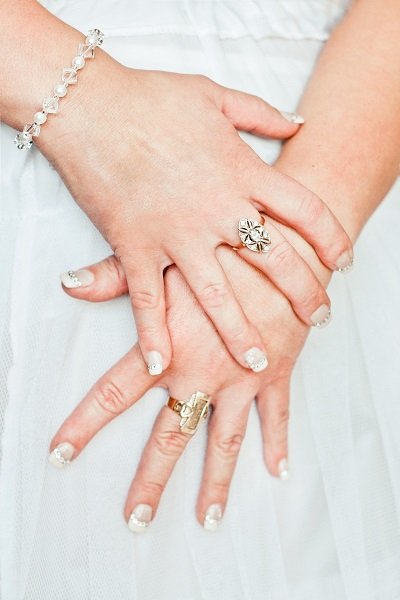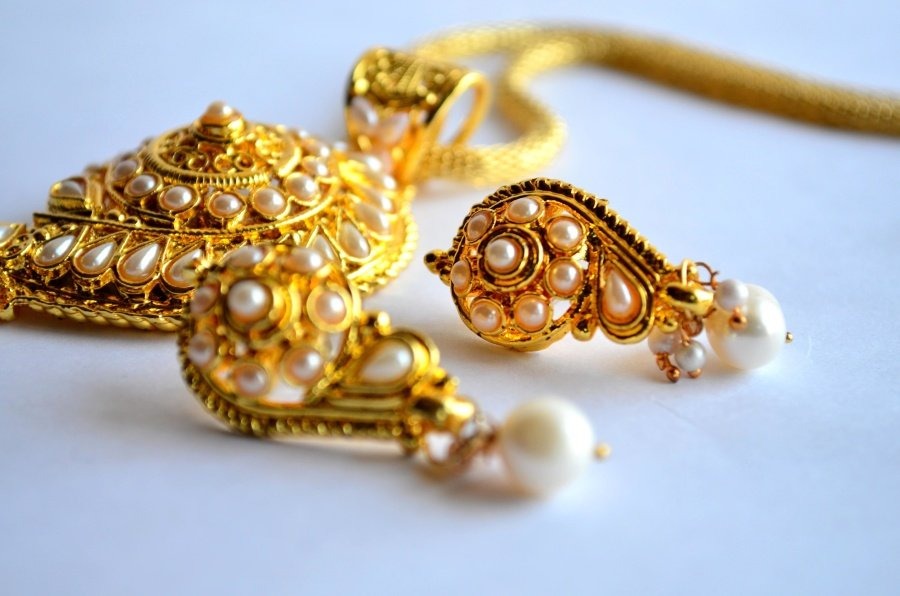Picture this scenario: You have come home after a big, glam office event where you wore a long dress, heels, full makeup and jewelry and you literally can’t wait to wear something comfortable. You put your keys to the bowl in your entryway, you leave your jacket, heels and purse there, and you race to the mirror. You’re cranky and itchy and you want to take everything off. You remove that big, sparkly statement necklace, and you get a first wave of relief. And that’s when you discovered that you are allergic to jewelry.
Having this awful experience must not prevent you from wearing jewelry. You just need to invest in a hypoallergenic one.
Signs of Allergy to Jewelry
Many people are allergic to specific metals, and sometimes, staining of the skin is thought to be a sign. However, discoloration is simply a reaction of metals against skin, particularly because of oxidation from sweat. Real metal allergies can cause any part of your skin that touches the jewelry to itch, turn red, sting and sometimes leave a rash. There can also be dry patches or swelling, inflammation, blisters and pimple-like formation. All these are signs of allergy to metal.
The most common cause of jewelry allergy is nickel. It’s a natural, white metal that’s often mixed with other metals to create an alloy. This is a cheap, widely accessible material that is used in making jewelry and other materials like eyeglass frames, buttons, zippers, watchbands, and hairpins. Almost 15% have allergies to nickel. But it’s not only nickel. Most people get allergic to alloys and even silver- and gold-plated jewelry, because they still contain alloys beneath the plating. Also, all poor-quality jewelry can cause allergic reactions.
What can be Done About Allergies to Jewelry?
If you experience metal allergies, steer clear of plated items such as nickel silver, German silver and most costume jewelry, as these usually rely heavily on nickel as a filler. It is best if you don’t wear them anymore.
Keep your jewelry pieces clean and free of tarnish. If you develop an allergy to a piece that you really love, wear it only for short periods of time, or better yet, bring it to a jeweler and have it coated with a hypoallergenic metal or layered with a film. Some people layer it on their own with a coat of clear nail polish to prevent future allergic reactions. And when you wear them, be certain to keep the skin that it touches dry.
If the allergic reaction is mild, you can do the coating or layering and still be able to wear your jewelry, but it’s far better to just stop wearing the jewelry than risk skin irritations. You may think that your body will eventually adapt and outgrow the allergy if you keep on wearing that jewelry, but the irritation could just worsen over time.
Switching to hypoallergenic jewelry is a better way to avoid allergy symptoms while still being able to look stylish with accessories. There are wide range of hypoallergenic necklaces, earrings, rings, bracelets and more that are stylish and attractive. Some jewelers even make unique, handmade hypoallergenic pieces, so you wouldn’t run out of choices.
What is Hypoallergenic Jewelry?
Hypoallergenic jewelry is your alternative if you want to still be able to wear jewelry despite previous experiences of having metal allergies. It’s simply jewelry that is designed to minimize the risk of an allergic reaction. If you experience flaky skin, redness, itching, swelling and rashes that are common symptoms of allergy to metals, buy only hypoallergenic, nickel-free jewelry.
These kinds of jewelry are made out of pure metals or alternative materials. If you are wondering what materials will not irritate your skin, try choosing jewelry created from these materials:
- Platinum
- Gold (14k and above, preferably 18k gold)
- Stainless steel (as long as it doesn’t contain nickel)
- Sterling silver
- Titanium
- Rhodium
- Niobium
- Argentium
- Tungsten
- Copper
- Wood
- Ceramic
- Medical-grade plastic
- Rope and other natural fibers
Benefits of Wearing Hypoallergenic Jewelry
Everyone, especially children, can benefit from wearing hypoallergenic jewelry. Here are the reasons why you should switch to them:
1. It won’t cause rashes
It is the main advantage you can get as you wear hypoallergenic pieces. No more risking the possibility of a rash – you just don’t get it anymore. Hypoallergenic jewelry is usually medical-grade and is compatible with the human body. Materials like stainless steel and titanium are used for making implants and surgical tools, so you can be sure that jewelries made of these materials will be safe when worn on the skin. Medical-grade plastic is also a great choice, and designers make fancy, beautiful earrings and beaded bracelets out of these that won’t cause skin allergies.
2. It’s a piece of investment
When considering pure metals like gold, platinum and sterling silver, you may need to pay more than what you usually spend on a jewelry (which makes you itch, by the way), but it’s a great investment. These pure, more expensive pieces will last longer than cheaper, low-quality jewelry, and you can use them for a lifetime. Pure materials have the strength, durability and resistance to tarnishing, which is good to find in a jewelry. Consider it a memory you will remember. You may even pass it on to your children in the future and the piece will still have big value.
3. It’s comfortable to wear all day
Nickel jewelry or costume jewelry may take minutes, hours or days to cause flare ups, redness and itchiness, and usually it happens when you’re not at home. Meanwhile, hypoallergenic jewelry feels comfortable no matter how long you wear it.
4. You can avoid nickel allergies
People can develop nickel allergies at any age. Sometimes, it can take years of wearing nickel for the body to trigger an allergic reaction to the metal. And once you have the allergy, it’s almost impossible to undo it. You can avoid it altogether by wearing nickel-free pieces that are hypoallergenic. For your kids and babies, it is recommended that you stick to titanium or medical-grade plastic. These materials pose no risk of sustaining an allergic reaction to a child’s sensitive skin, making one less worry for you.



